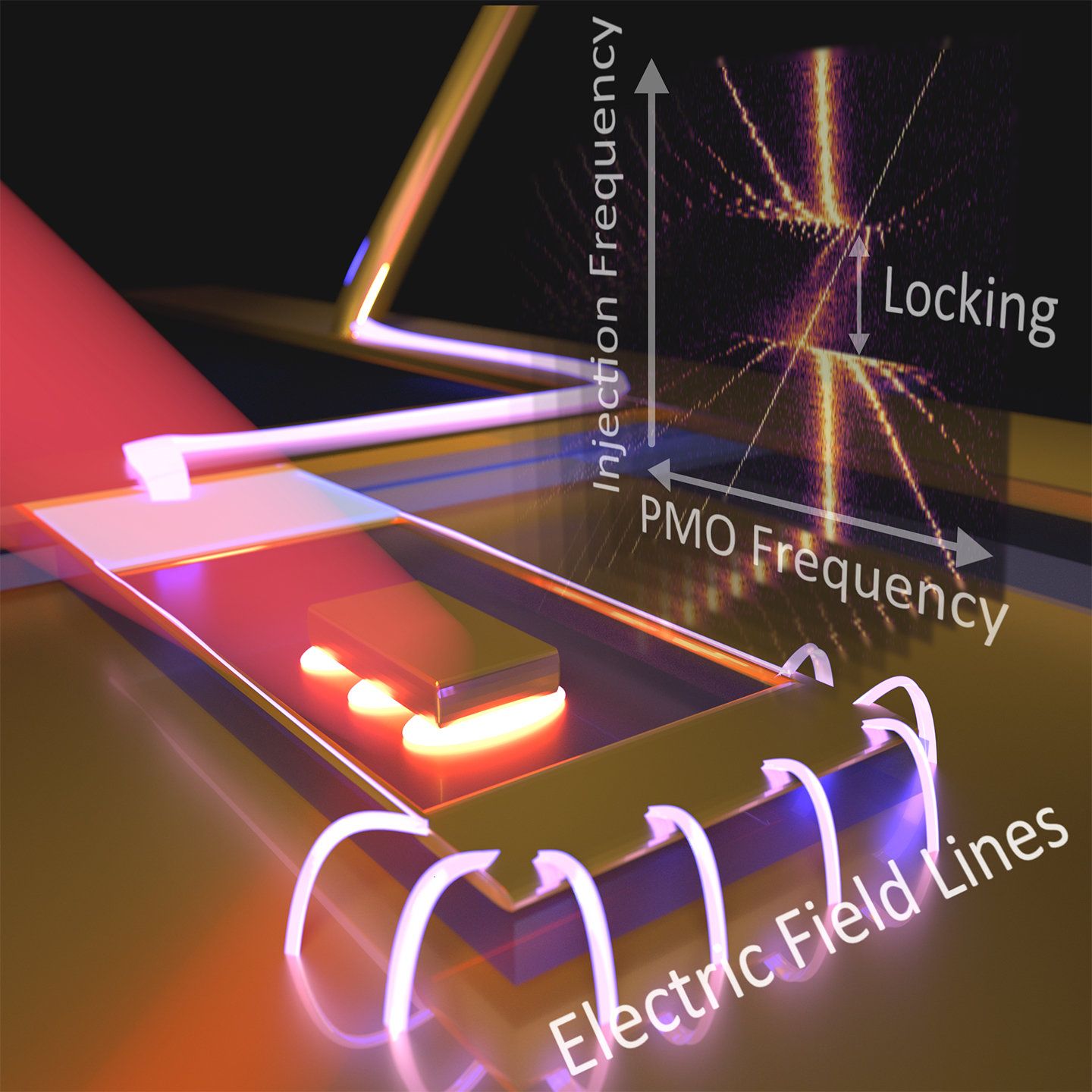Imagine a single particle, only one-tenth the diameter of a bacterium, whose miniscule jiggles induce sustained vibrations in an entire mechanical device some 50 times larger. By taking clever advantage of the interplay between light, electrons on the surface of metals, and heat, researchers at the National Institute of Standards and Technology (NIST) have for the first time created a plasmomechanical oscillator (PMO), so named because it tightly couples plasmons—the collective oscillations of electrons at the surface of a metal nanoparticle—to the mechanical vibrations of the much larger device it’s embedded in.
The entire system, no bigger than a red blood cell, has myriad technological applications. It offers new ways to miniaturize mechanical oscillators, improve communication systems that depend on the modulation of light, dramatically amplify extremely weak mechanical and electrical signals and create exquisitely sensitive sensors for the tiny motions of nanoparticles.
NIST researchers Brian Roxworthy and Vladimir Aksyuk described their work in a recent issue of Optica.









Comments are closed.